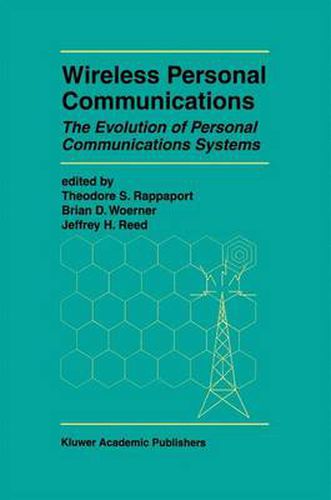Readings Newsletter
Become a Readings Member to make your shopping experience even easier.
Sign in or sign up for free!
You’re not far away from qualifying for FREE standard shipping within Australia
You’ve qualified for FREE standard shipping within Australia
The cart is loading…






This title is printed to order. This book may have been self-published. If so, we cannot guarantee the quality of the content. In the main most books will have gone through the editing process however some may not. We therefore suggest that you be aware of this before ordering this book. If in doubt check either the author or publisher’s details as we are unable to accept any returns unless they are faulty. Please contact us if you have any questions.
This text presents a broad range of topics in wireless communications, including perspectives from both industry and academia. The book serves as a reflection of late-1990s research thrusts in wireless communications, an area which continues to grow as the industry strives to provide a wider range of services with greater reliability and at lower cost. The book is organized into four sections. Section I focuses on propagation and smart antennas with emphasis on measurements, modelling and simulation. Section 2 is devoted to the subject of Code Division Multiple Access (CDMA) systems with coverage of bit error rate calculations, interference cancellation, frequency estimators and acquisition schemes. Section 3 covers networking and multiple-access issues such as mobility tracking, Markov analysis of random access protocols, and the design and development of a prototype system to access Low Earth Orbiting (LEO) satellites. Section 4 presents software radio technologies, including wideband software-definable base station technology, space-borne processing technology for mobile communications systems, filter design, universal cordless telephone transceivers using DSP, a method for predicting nonlinearities for an RF power amplifier, MAP symbol detection of CPM bursts, and unification of MLSE receivers. The volume should serve as a useful reference source and may be used as a text for advanced courses on the subject.
$9.00 standard shipping within Australia
FREE standard shipping within Australia for orders over $100.00
Express & International shipping calculated at checkout
This title is printed to order. This book may have been self-published. If so, we cannot guarantee the quality of the content. In the main most books will have gone through the editing process however some may not. We therefore suggest that you be aware of this before ordering this book. If in doubt check either the author or publisher’s details as we are unable to accept any returns unless they are faulty. Please contact us if you have any questions.
This text presents a broad range of topics in wireless communications, including perspectives from both industry and academia. The book serves as a reflection of late-1990s research thrusts in wireless communications, an area which continues to grow as the industry strives to provide a wider range of services with greater reliability and at lower cost. The book is organized into four sections. Section I focuses on propagation and smart antennas with emphasis on measurements, modelling and simulation. Section 2 is devoted to the subject of Code Division Multiple Access (CDMA) systems with coverage of bit error rate calculations, interference cancellation, frequency estimators and acquisition schemes. Section 3 covers networking and multiple-access issues such as mobility tracking, Markov analysis of random access protocols, and the design and development of a prototype system to access Low Earth Orbiting (LEO) satellites. Section 4 presents software radio technologies, including wideband software-definable base station technology, space-borne processing technology for mobile communications systems, filter design, universal cordless telephone transceivers using DSP, a method for predicting nonlinearities for an RF power amplifier, MAP symbol detection of CPM bursts, and unification of MLSE receivers. The volume should serve as a useful reference source and may be used as a text for advanced courses on the subject.